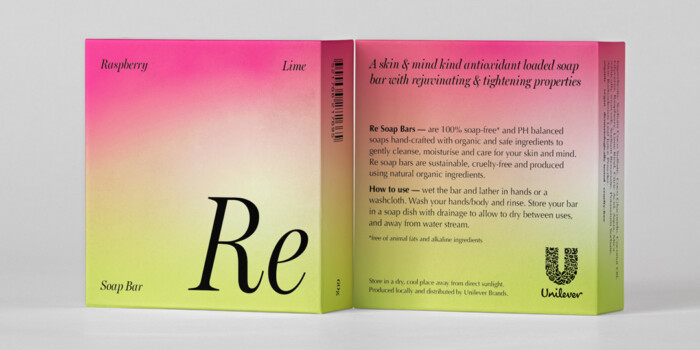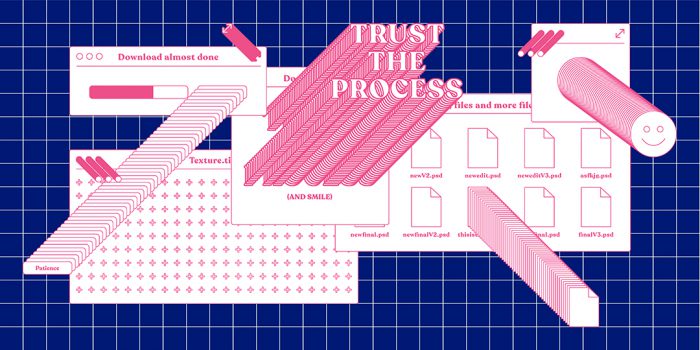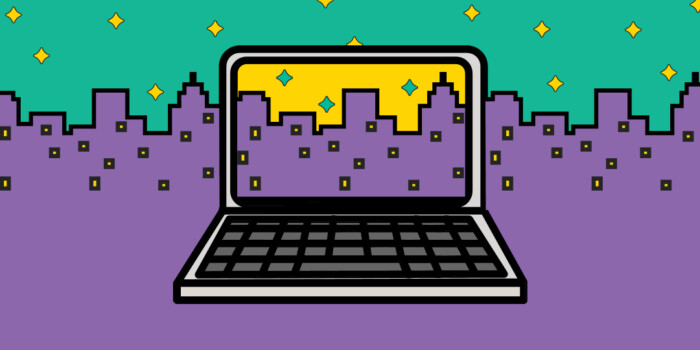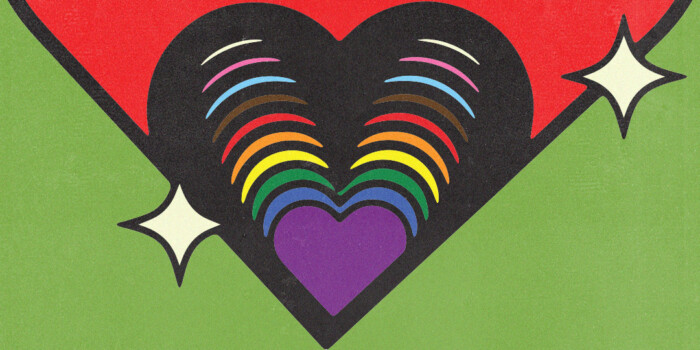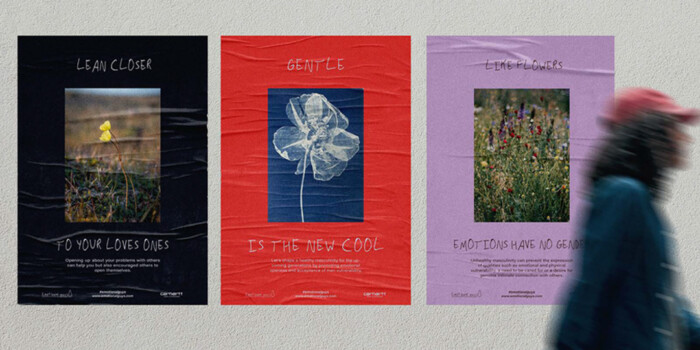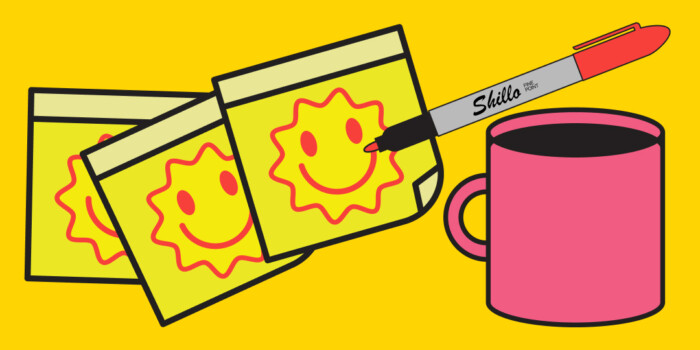The 11 Types of Graphic Design: What Are They?

Most people are fairly confident in their definition of graphic design, but they end up pigeonholing graphic designers into a very narrow scope simply because they have a limited idea of what designers actually do. Do they create logos for businesses? Do they edit images in Photoshop? Do they design graphics for digital advertising? Yes, but these are only elements of a larger picture.
Look around right now. You see the sign hanging above that shop window? The coffee sleeve hugging the to-go cup you’re drinking out of right now? The poster across the street advertising the next event at your local theater? The things you interact with every day were all created by a graphic designer. These elements all communicate an idea or concept—that’s the purpose of graphic design. It’s a graphic designer’s job to marry creativity and strategy in order to effectively communicate with the world around them (that is why good communication skills are just as much part of a designer’s repertoire as originality is).
Most people can make a pretty picture, but not many people have the skill set to think about the purpose of a design before they even put pen to paper (or stylus to screen). At Shillington, we teach our students how to listen to client needs and how to research and develop concepts to find a balance between functionality and aesthetics. Shillington Brisbane teacher Adam Busby puts this into better words:
Design isn’t just a craft, it’s a way of thinking and once you learn that amazing way of thinking, you can never see the world in the same way again.
First, Let’s Take It Back to Basics
All graphic design, regardless of type, is based on five key elements:
- Balance for stability and structure
- Hierarchy to create organization and direction
- Alignment to create a sharper, clearer outcome
- Repetition to unify and strengthen
- Contrast to generate impact and highlight important areas
Graphic design is all about the “WOW” factor, but good design is nothing without the “ohhhhh” of understanding as the eye and brain connect style and purpose.
Now, Let’s Demystify the World of Graphic Design
Design is everything from the physical to the digital to everywhere in between. There is a lot more to graphic design than a stunning website or stand-out business cards. These are just smaller elements of larger categories. To fully understand the world of graphic design, we must break it down into 11 parts:
1. Branding/Visual Identity
Everyone has their own unique story to tell—from individuals to small businesses to large corporations. Once these stories are crafted, it’s time to give them a voice. That’s where a graphic designer comes in. They work with the client to develop a visual representation of their brand (their brand identity) in order to breathe life into their story, bringing shapes, colors and images into the narrative. Through the careful use of imagery, they hope to leave a lasting impression of the brand in the mind of the audience.
Designers who specialize in this field create a variety of assets, including: logos, business cards, color palettes and typography. Branding teams are tasked with communicating intangible qualities to the audience using visual communication. Visual identity graphic designers must have a working knowledge of all of the types of graphic design to create a concept that translates across different media while also maintaining brand consistency across all channels. These are the designers that often end up pursuing careers in marketing and advertising later in life.
2. Advertising & Marketing Design
We are constantly bombarded with marketing campaigns everywhere we go. We see them on television, when we watch an online video, when we pick up a newspaper and when we are scrolling through Facebook. We’ve been exposed to the good and the bad, even if we are so accustomed to campaigns that we don’t consciously label them outright. When we see a great ad, we know it’s good because we are quick to hit the “shop” or “buy now” button. That is the measure of an effective marketing campaign.
Whether it’s a digital, print or hybrid campaign, marketing designers are the people behind the concept and execution of these projects. Many people don’t realize how much time goes into the creation of a successful advertisement (probably because they only see them for mere seconds or minutes, after all). Marketing designers are tasked with the challenge of strategically creating concepts that resonate with a target demographic. Sometimes these designers work as freelancers, while other times they are part of an in-house team of creative directors, art directors and copywriters. As marketing demands become more nuanced, more firms are beginning to invest in more in-house teams.
3. Digital Design
Digital design refers specifically to that which is created and produced to be viewed on a screen. This can encompass many different types of design, from UI (user interface found on websites, games and apps) to 3D modeling. A digital designer concerns themselves with the visual elements of your digital experience. Things like the size, color and placement of buttons all fall under their purview. They will often work hand in hand with UI developers who write the code that makes the programs work.
As you know, the world is only becoming more digitized, which means this is a field that will continue to expand as consumers become more reliant on screen time.
Are you ready to transform your career? Download our guide.
Discover how to become a graphic designer and start your creative career.
4. Product Design
Product designers orchestrate the entire design process for products. There are six types of product designers:
- Interaction or UX Designers that understand how apps interact with consumer needs
- Graphic or Visual Designers that create images and the user interface
- User Researchers that understand the minds of your customers
- Data Analysts that test products and use that information and data to inform the end product
- Prototypers that can implement and test ideas as cheap and fast as possible
- Business Strategists that analyze the strategy behind every design decision
These are all individual roles, but a good product designer understands each avenue. These designers help you deliver on your brand. If your branding team promises a professional and compassionate experience, your product designer ensures that your clients get it. It’s one thing to have a good product, but if you can’t deliver on what you’re promising your audience, you are only hurting yourself.
4. Editorial/Publishing
One of the more common types of graphic design is editorial design, which deals with publications such as books and magazines. Publication designers create layouts, covers and graphics for editorials in order to convey the author’s vision and message for their work. With the rise of online publishing, editorial designers aren’t limited to working on print media either. Online newspapers, magazines and ebooks all require somebody to design the layout, covers, editorials and graphics as well.
Publication designers can be freelancers, in-house creatives or part of a creative agency. No matter where they are employed, they each work with editors and publishers to bring about a beautiful, effective end result. Therefore, they must understand printing, digital publishing and color management.
5. Packaging
Packaging is both the most visible and invisible aspect of any product design. It is a practical element that can make a huge impact on the product’s viability in the market. Changing packaging design can be an essential element of a rebranding or it can be part of what attracts clients to your product. Packaging design alone often has the potential to propel a company ahead of its competitors or it can be the final nail in their metaphorical coffin. In 2017, Lean Cuisine was the grand prize winner of the Nielsen Design Impact Awards because their product makeover resulted in a $58 million sales increase compared to their previous year.
7. Lettering/Typeface Design
If you have ever dipped your foot into the planner and bullet journaling community, you have been introduced to the art of lettering. In fact, many stationery addicts have extensive knowledge of these types of graphic design and the many tools necessary to create stunning works of art using the written word. Typeface design requires a working knowledge of typography, which, at its basis, is the science of lettering.
Making the right type choice can communicate your message instantly. A bad type choice, however, can be jarring, distracting and often completely unreadable. Think about the FedEx logo. You’re picturing it right now, correct? That’s because they’re branding is so effective that just hearing the name of the company can create a sharp, precise visual in your mind. The key is to mix style with clarity.
8. Environmental Design
Environmental design is a discipline that touches on many different types of graphic design. Ultimately, these designers are focused on giving their audience a great experience. They connect people to places because a person’s time spent in a certain environment can be made memorable if it’s interesting, easy to navigate and informative. An environmental designer often has experience or a background in architecture as environmental design encapsulates everything from graphics, landscapes, interiors and other architectural elements.
9. Set Prop Design
Costume designers are often the celebrated heroes of film and television, while set-prop designers remain the unsung heroes of the industry. These designers are in charge of all of the graphic design elements that are necessary to create the atmosphere of the set. Good prop designs should be noticeable, but only subconsciously. It takes a lot of effort for a designer to create these elements, only for them to blend into the scene. But that’s the entire point. If even so much as one prop is inaccurate or off, the viewer will know, which will completely remove them from the environment the director is trying to immerse them in.
The lettering on the old-fashioned barbershop window is part of prop design, as is the label on a bottle of magic potion that’s merely sitting in the background of a scene. These elements have all been designed by someone. Set prop designers are the invisible hands that create the necessary objects to make the world the characters inhabit seem real. They redesign actual objects, like presidential seals and create new ones, like newspapers written in elvish.
10. Human-Centered Design
Human-centered design, which is also referred to as Design Thinking, isn’t a type of design exactly. Rather, it is a philosophy that informs all types of graphic design. It puts the person at the center of the design process. It seeks to aptly identify a problem and then create solutions that focus on the human user’s needs and wants. This is what makes it different from other types of graphic design. Each area works to solve a problem, but this method is strongly focused on the perspectives of people who are experiencing a certain problem and how good a design is at effectively solving that problem.
Before a designer can begin the creative process, they need to understand the audience they are working to reach. They immerse themselves in the community, they talk face-to-face with the people in that community and they are constantly observing everything around them. Human-centered designers not only use this information to inform their designs, but they also engage the people in the process.
11. Design for Good
The human-centered design focuses on the user while Design for Good focuses on how the human lives. It is about designing social change. One great example of this is the design of a new apartment building complex. By rethinking traffic patterns and building designs, an architect can create a community that encourages children to play outside in well-lit playgrounds and encourages the community to become closer by designing large windows and gathering spaces. Graphic designers can also be part of designing community projects that have a positive social impact. Apps, games, advertisement and publications aimed at making the world a better place are all different types of graphic design that embody the philosophy of design for good.
Working as an Ad Agency or In-House Marketing Design
When establishing your career as a graphic designer, one of the decisions you will need to make will be whether you decide to pursue a career with an ad or design agency or become part of an in-house ad team. There are significant differences between the two, each with their own strengths and weaknesses.
The main difference between the two is that if you work for an in-house team, you know the ins and outs of the company. You are part of the corporate culture and can focus exclusively on the direction of the company’s overall narrative. You will become very specialized as you work on many products across more specified areas (i.e. detergents or baby food). You will have more say about how the campaigns you work on are conducted. You may also find yourself handling budgeting issues.
Meanwhile, at an agency, you will work with many different companies across a broader range of products. You will have to apply your skills evenly to a broad range of industries. Often, you are the “fresh eyes” that a company needs. It is important to note that some agencies specialize in specific kinds of clients, though you will still see a wider variety of products and problems than you may encounter as part of an in-house team.
Working as a Freelancer
Full-time freelancers often begin as moonlighters. Many used their skills while in school to make a few extra dollars, building a portfolio and reputation slowly over a number of years before finally taking the plunge and becoming a full-time freelance designer. There are a number of things to consider when freelancing. One is becoming accustomed to a more gradual rise to stability. Freelancers experience both feast and famine during the very beginning of their careers as they continue to acquire more clients.
Another thing to consider is that while freelancing is an incredible career opportunity, it has its fair share of extensive planning, long nights and creative problem-solving. There are many people who live great lives as digital nomads, working from wherever they are in the world. There are also many freelancers who are busy solopreneurs, who have made the decision to take control of their lives and careers by becoming self-employed. You will learn how you work best as a freelancer and can build your career path from there.
If you can handle the pressure of drumming up clients, handling contracts, paying your own quarterly taxes and building your own brand, then freelancing is a perfect fit for you. If you need the encouragement and stability of an office environment or lack the ability to market yourself to prospective clients, then it might not be a good move for you.
The graphic design industry is brimming with opportunities.
There is a place for designers who want to specialize in their area of expertise and there is a place for designers who want to dabble in every type of design. The all-encompassing world of graphic design cultivates an industry that celebrates every skill set, talent and creative approach.
Want to learn more about graphic design and find out if it’s a promising career path for you? Read about the range of jobs and opportunities available to designers after completing the Shillington graphic design course. And to help you out further, we’ve put together this list of 120 design terms to make sense of the jargon.
Want to study from anywhere you are in the world? Join the Global Classroom with Shillington’s online graphic design course and launch your creative career.
Want to win some amazing prizes and stay in the loop with all things Shillington? Sign up to our newsletter to automatically go in the draw.


